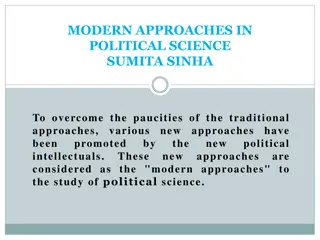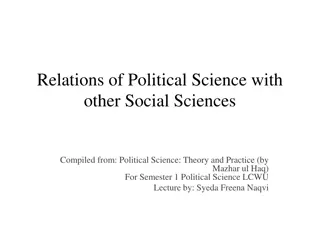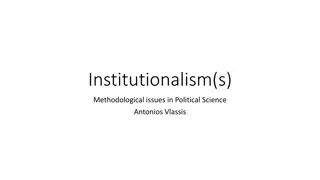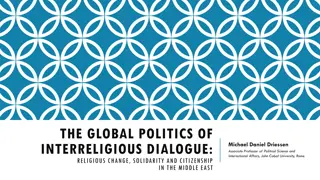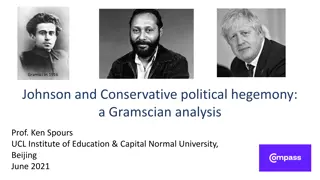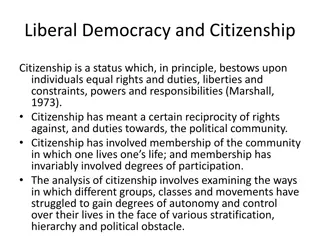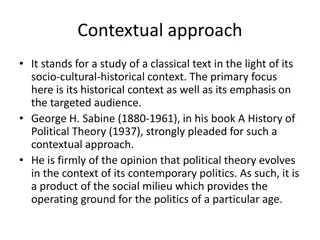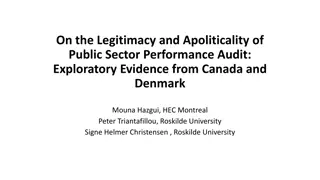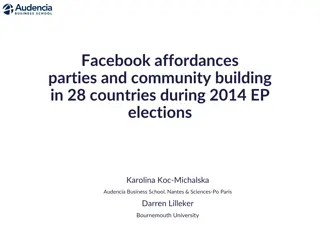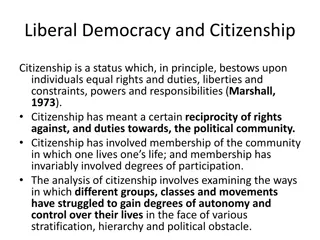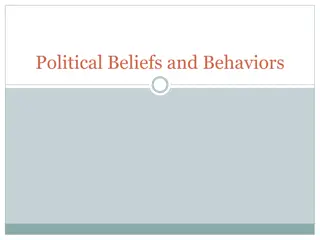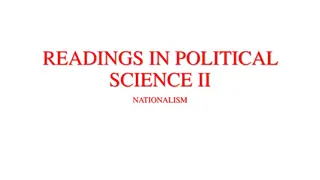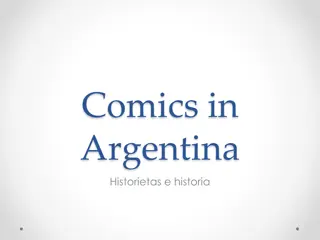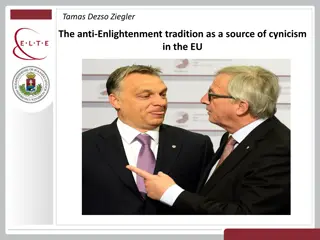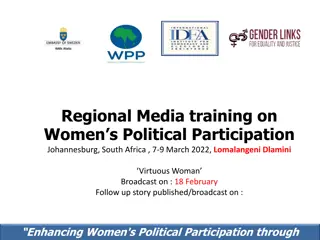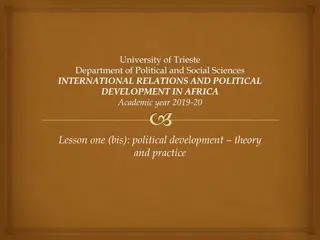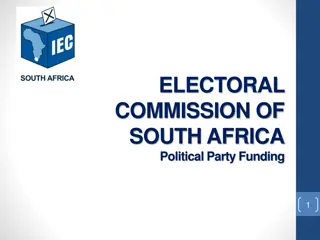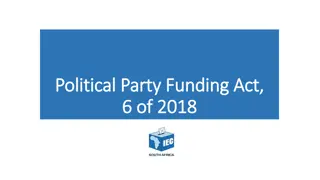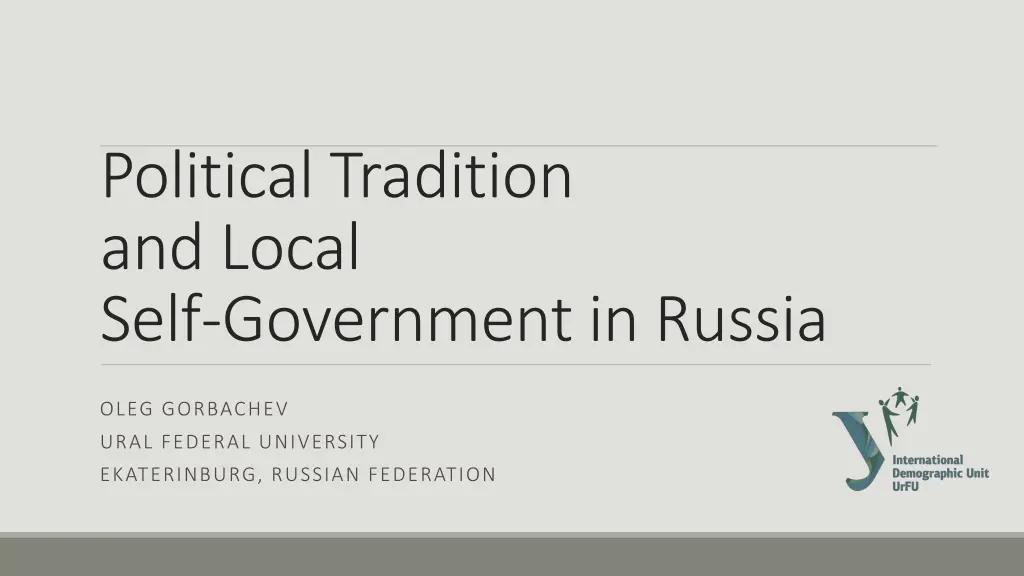
Evolution of Local Self-Government in Russia
Explore the historical evolution of local self-government in Russia, from communal structures to modern municipal governance. Understand the interaction between local and state bodies, the functions of local self-government, and the challenges faced in maintaining autonomy. Delve into the political traditions shaping Russia's local governance landscape.
Download Presentation

Please find below an Image/Link to download the presentation.
The content on the website is provided AS IS for your information and personal use only. It may not be sold, licensed, or shared on other websites without obtaining consent from the author. If you encounter any issues during the download, it is possible that the publisher has removed the file from their server.
You are allowed to download the files provided on this website for personal or commercial use, subject to the condition that they are used lawfully. All files are the property of their respective owners.
The content on the website is provided AS IS for your information and personal use only. It may not be sold, licensed, or shared on other websites without obtaining consent from the author.
E N D
Presentation Transcript
Political Tradition and Local Self-Government in Russia OLEG GORBACHEV URAL FEDERAL UNIVERSITY EKATERINBURG, RUSSIAN FEDERATION
Core aspects of local self-government: Evolution of the main forms of local self-government Interaction between local self-government and state government bodies Functions of local self-government Levels of local representative democracy Economic autonomy of local self-government OLEG GORBACHEV, URAL FEDERAL UNIVERSITY
Evolution of the main forms of local self-government 1. The institutions of communal (corporate) self-government. Between the 18 and the 20 centuries all social groups in Russia had their self- government prerogatives . They served the interests of specific social groups rather than specific areas. 2. Zemstva (1861) were the first forms of territorial classless self-government. 3. Soviets (1917)were organized according to the class model, which fitted well with the concept of collective socially-orientated self-government of the communal type. It legitimized the soviets in the eyes of the population. 4. Modern municipal self-government began as an attempt to adjust the Europeanized democratic model to Russian conditions (Constitution of 1993 and the Federal Law No. 131 of 6 October 2003). OLEG GORBACHEV, URAL FEDERAL UNIVERSITY
Local self-government and state government bodies The trends that can be traced back throughout the Russian history: 1. The central government had to tolerate developed self-government because government officials were unable to control the vast territories of the country and had to delegate authority to lower self-organized structures. 2. Such distribution of authority inevitably engendered concerns about the country's disintegration. Eventually, the central government tried to use direct administrative control or representatives of those social groups which were loyal to it. 3. Bodies of local self-government cannot avoid being included in the power vertical, which deprives them of their autonomy even though their independence is asserted by the current legislation. OLEG GORBACHEV, URAL FEDERAL UNIVERSITY
Functions of local self-government The early forms of local self-government performed a wide range of functions but the increasing pressure of the state government gradually restricted the powers of communal democracy. Throughout their history, institutions of self-government were responsible for providing welfare services to the local population. Since local governments were chronically afflicted with deficit of power and many regions were remote from the centre, local officials (elected or appointed) were trying to broaden their powers, which made the state distrustful of grassroots public activity. Bodies of local self-government started to compete with state officials, which forced the central government to take countermeasures restricting the authority of elected bodies. Trying not to lose control, the state deliberately avoided delineating powers between the regional authorities and local self-government bodies. OLEG GORBACHEV, URAL FEDERAL UNIVERSITY
Levels of local representative democracy Rural or urban communities were the most stable because they satisfied the interests of specific social groups. In the 18 and 19 centuries the government used communal or guild representation to create structures of volost and urban self- government, which belonged to the state government system. Higher levels of self-government were classless (zemstva). They emerged at the stage of industrial modernization and operated on the levels of uezds and guberniyas. OLEG GORBACHEV, URAL FEDERAL UNIVERSITY
Levels of local representative democracy Centralized classless people s representation could have strengthened the tradition of zemstva but the Imperial Duma (1906) could not compete with the autocratic monarchical power. State Duma Zemstva (uezds and guberniyas) Volost and urban self government Rural and urban communities OLEG GORBACHEV, URAL FEDERAL UNIVERSITY
Levels of local representative democracy Soviets: the lower levels (rural, urban and district) created pre-conditions for the modern municipalization while the soviets of higher levels did the same for federalization. Traditionally, modernmunicipalities are existing on the regional and urban levels. OLEG GORBACHEV, URAL FEDERAL UNIVERSITY
Economic autonomy of local self-government Historically, rural and urban communities had limited powers not only because they faced administrative restrictions but also because they were short of resources. After the zemstva were established, the first attempt was made to demarcate the sources of tax revenues for different levels of power. In 19-20 centuries government took conscious efforts to maintain the uncertainty in the distribution of tax revenues. According to the current law on local self-government, the main sources of municipal funding are the land tax and the personal property tax. However, these taxes account only for 12 % of the municipal budget revenues, which means that the central government continues to create the situation of financial uncertainty in order to preserve its control over municipal bodies. OLEG GORBACHEV, URAL FEDERAL UNIVERSITY
Conclusions There is a specifically Russian model of local self-government, which is subject to tight governmental control and is embedded into the vertical structure of power. The local self-government will gradually obtain more autonomy through the development of small and medium business (I believe ), which will mean the expansion of the local taxable base. Another prerequisite for achieving the optimal balance between the state and the society is to alleviate the bureaucratic pressure on municipalities and make them more autonomous, which has been declared as one of the targets of the ongoing municipal reform. However, it is still hard to tell whether in these conditions Russian institutions of self- government will manage to gain any real independence. OLEG GORBACHEV, URAL FEDERAL UNIVERSITY
Thank you! Oleg Gorbachev, Dr. of History, Prof. Ural Federal University Ekaterinburg, Russian Federation og_06@mail.ru


